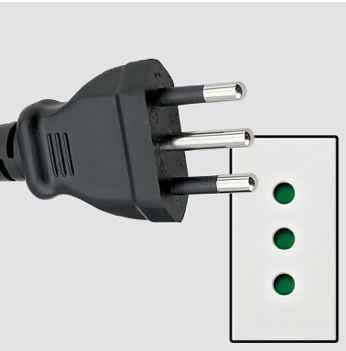Vatican City / Stato della Città del Vaticano – Let’s explore here
What’s it like in Vatican City?
The city-state functions as the spiritual and administrative center of the Roman Catholic Church. It is home to the pope, who is both the religious leader of the Catholic Church and the sovereign of the Vatican City state.
Vatican City is the smallest country in the world (121 acres – about 69 football pitches!), and is located entirely within Rome in Italy. It also has the smallest population in the world – fewer than 500 people (2019). It has no public transport system and virtually no cars – but then you can walk across it in about 20 minutes!
The current borders of Vatican City came about in 1929, as part of a treaty between the Italian state and the Pope. The Papal States of Benevento, Campagna e Marittima, Marche, Pontecorvo, Romagna, Umbria and Rome – all in Italy, and Avignon and Comtat Venaissin, both in France, were taken away from the Pope. The Catholic Church was then compensated for the loss of the territories, some of which had been under Papal control for over 1,100 years.

A bit about the history of Vatican City
Ancient and Medieval Origins
Vatican City has its origins in ancient Rome, where the area was originally part of the Roman Empire. The site where Vatican City now stands was once the location of a circus built by Emperor Caligula in the 1st century AD, used for chariot races and public events. It became a significant place of Christian pilgrimage after Saint Peter, one of Jesus Christ’s apostles, was martyred and buried there around 64 AD. The early Christian community began to build a shrine and eventually the original St. Peter’s Basilica was constructed over his tomb.
Papal Power and the Papal States
By the 8th century, the papacy had gained considerable power, both religiously and politically. In the Middle Ages, the popes established control over much of central Italy, creating the Papal States, a large territory that extended from Rome across the Italian peninsula. The papacy ruled the Papal States for over 1,000 years, exercising both secular and religious authority.
Loss of the Papal States and the Lateran Treaty
In the 19th century, following the unification of Italy, the Papal States were gradually annexed by the Kingdom of Italy. This caused a significant loss of territory for the papacy. Tensions arose between the Italian government and the papacy, which resulted in the ‘”‘Roman Question’, the dispute over the status of Rome and the pope’s authority.
The issue was resolved in 1929 with the signing of the Lateran Treaty between the Holy See and the Kingdom of Italy, under which Vatican City was established as an independent sovereign state. The treaty granted the pope full sovereignty over the Vatican, ensuring the independence of the Holy See.
Modern Vatican City
Since its establishment, Vatican City has remained a center of religious, cultural and political significance. The Vatican is home to priceless art and religious treasures, including the Sistine Chapel and St. Peter’s Basilica, which attract millions of visitors each year. It is also the headquarters of the Catholic Church and the site of the pope’s residence and office.
Vatican City plays an important role in international diplomacy, often acting as a voice for moral and humanitarian issues on the global stage. Although it does not engage in political matters in the same way as other states, it maintains diplomatic relations with most countries and is a member of various international organisations.
Role in Religion and Global Influence
The Vatican remains a significant force in global Christianity, with the pope serving as the leader of over 1.2 billion Catholics worldwide. It has a deep influence in religious and cultural matters and frequently participates in dialogues concerning peace, human rights and interfaith relationships. Despite its small size, Vatican City’s historical, religious and political importance continues to shape its role in the world today.


Vatican road trip
As Vatican City is landlocked by Italy, we visited the Vatican as part of our road trip to Italy. Having spent the day in this interesting little country, we headed on to San Marino, also landlocked by Italy.
Our road trip to the Vatican really improved our knowledge of this intriguing country, and enabled us to meet some interesting people.
Is it free to visit the Vatican?
There’s no passport control when entering Vatican City.
There is free public access to Saint Peter’s Square and Saint Peter’s Basilica. Whenever the pope holds one of his audiences for the general public, you can enter the hall for free, although you have to get the free tickets beforehand.
All of the Vatican Museums, incorporating the Sistine Chapel, charge an entrance fee.
You can only enter the gardens with a guided tour, as part of viewing the excavations under the basilica.
Map of Vatican City

What’s it like to drive in Vatican City?
Unfortunately I am neither holy enough nor deemed important enough to know what it’s like to drive within the Vatican – although I imagine it’s quite a quick driving tour!
The Pope’s car
If you see a car with prefix SCV – it’s from the Vatican – a rare sight. The Pope has access to a bulletproof car aptly named the Popemobile. He tends to use public transport, but does sometimes drive a Ford Focus or a 1984 Renault 4.
We’ve also created a dedicated page to driving abroad, which you might find helpful 🙂
What currency do they use in Vatican City?
In the Vatican they use the Euro. The use of credit / debit cards is now widespread.
You should make yourself aware of the amount that your bank charges you for using credit and debit cards abroad. Often credit cards are cheaper for purchasing items directly, and for withdrawing cash from ATMs.
What language do they speak in Vatican City?
They speak Latin and Italian in the Vatican. We found that English is also spoken, at least by some of the Swiss guards.
What time zone is the Vatican in?
Remember, when you’re planning your next trip to take a look at what time zone it’s in.
Do I need a visa to visit the Vatican?
We’ve created a dedicated, more comprehensive page on visas, which you should find helpful. Check it out!
Is wild camping legal in Vatican City?
No, wild camping is illegal and not possible in the Vatican.
What plug / socket type do they use in Vatican City?
In the Vatican they use plug / socket types F and L.


Health issues in Vatican City
Is it safe to drink water in the Vatican?
Yes, it is safe to drink tap water in the Vatican. Bottled water is also readily available across the country.
What vaccinations are required for Vatican City?
This NHS website is kept up to date with all relevant information on vaccinations in the Vatican.
Phones in Vatican City
What is the country calling code for the Vatican?
The country calling code for the Vatican is +379
What are the emergency phone numbers in the Vatican?
- The emergency number for police in the Vatican is: 112
- In the Vatican, the emergency number for ambulance is: 112
- The emergency number for fire in the Vatican is: 112
If you’ve got some useful info that you’d like to share, let us know!
And don’t forget to check out all the other pictures!
